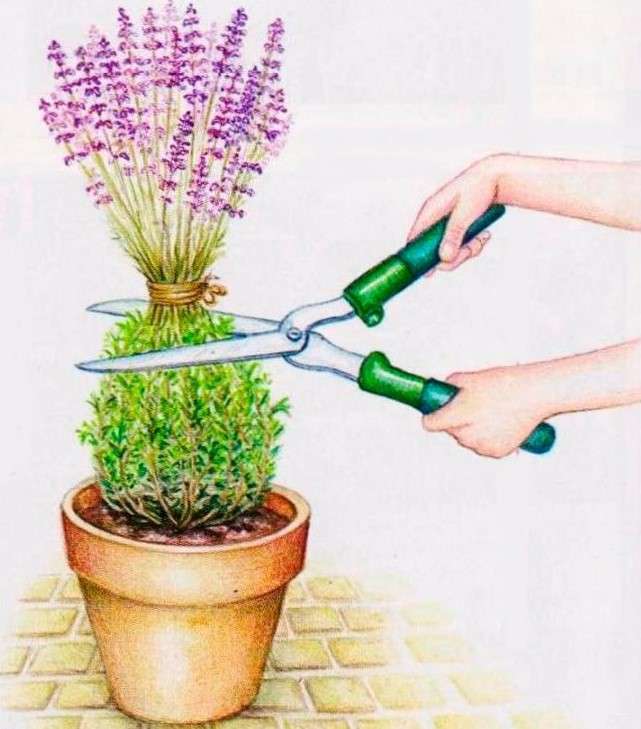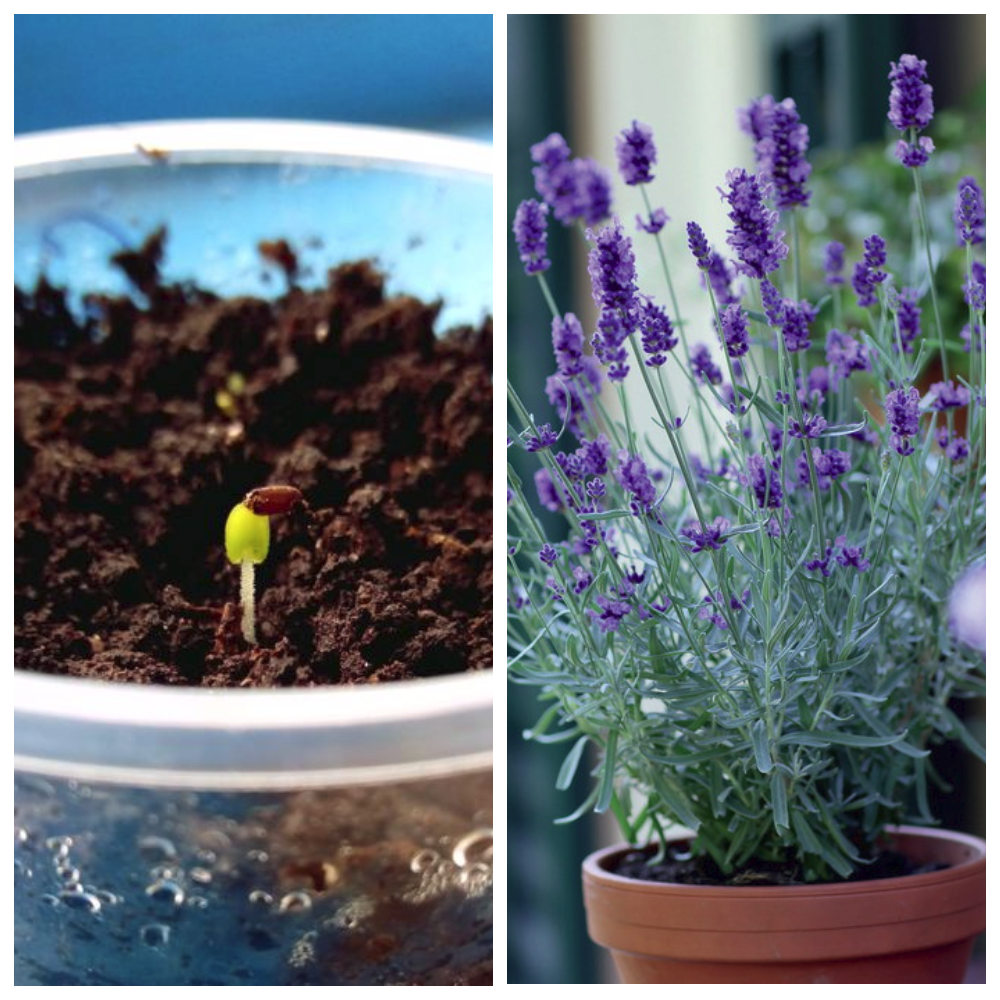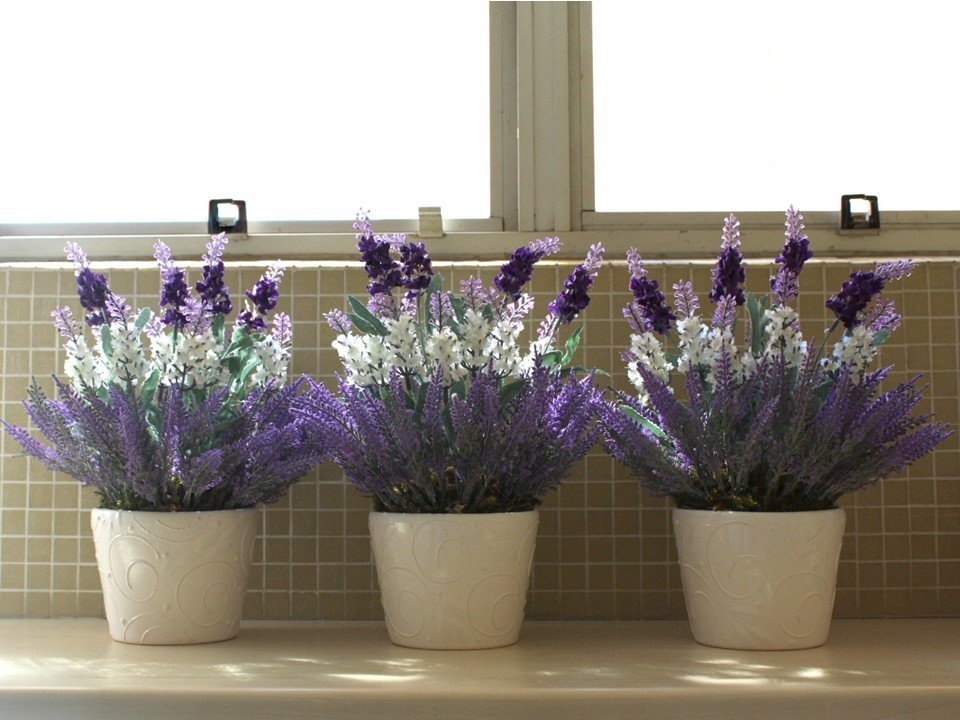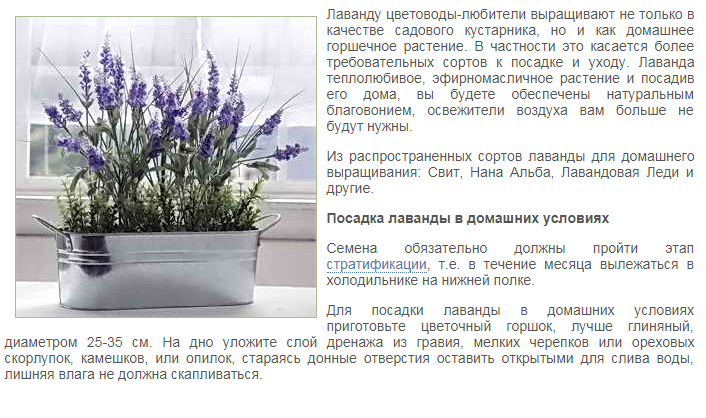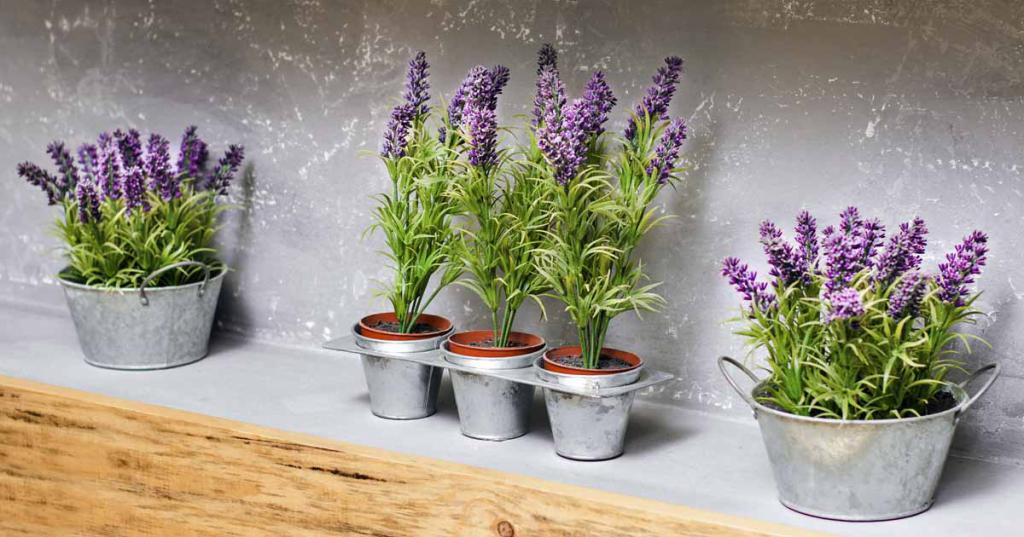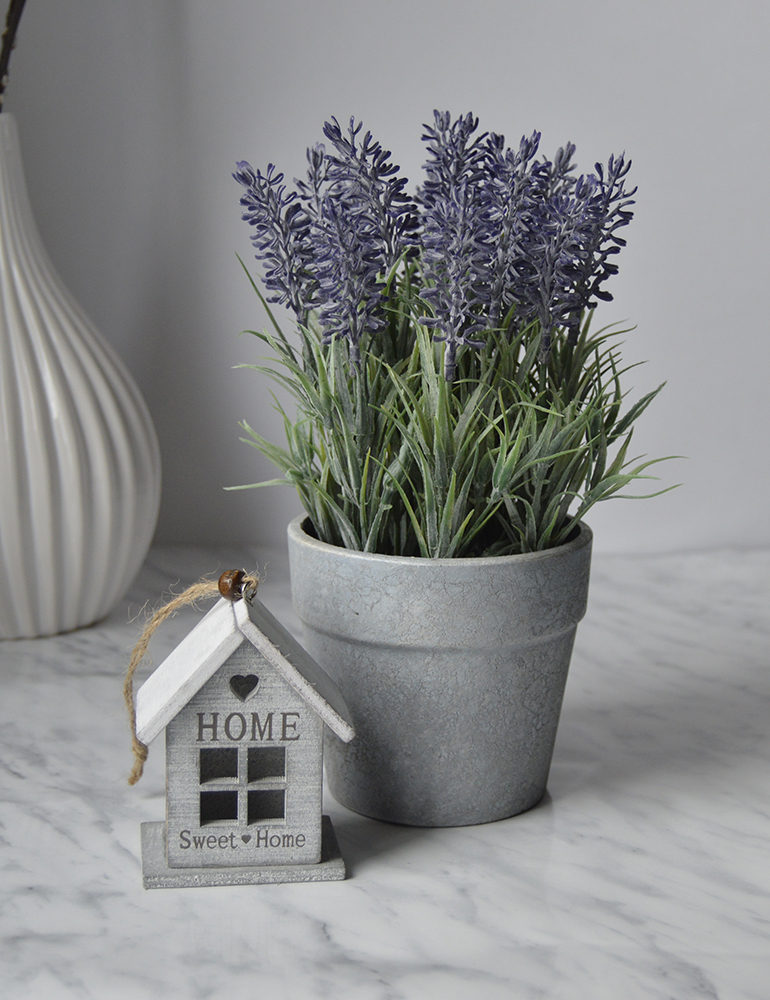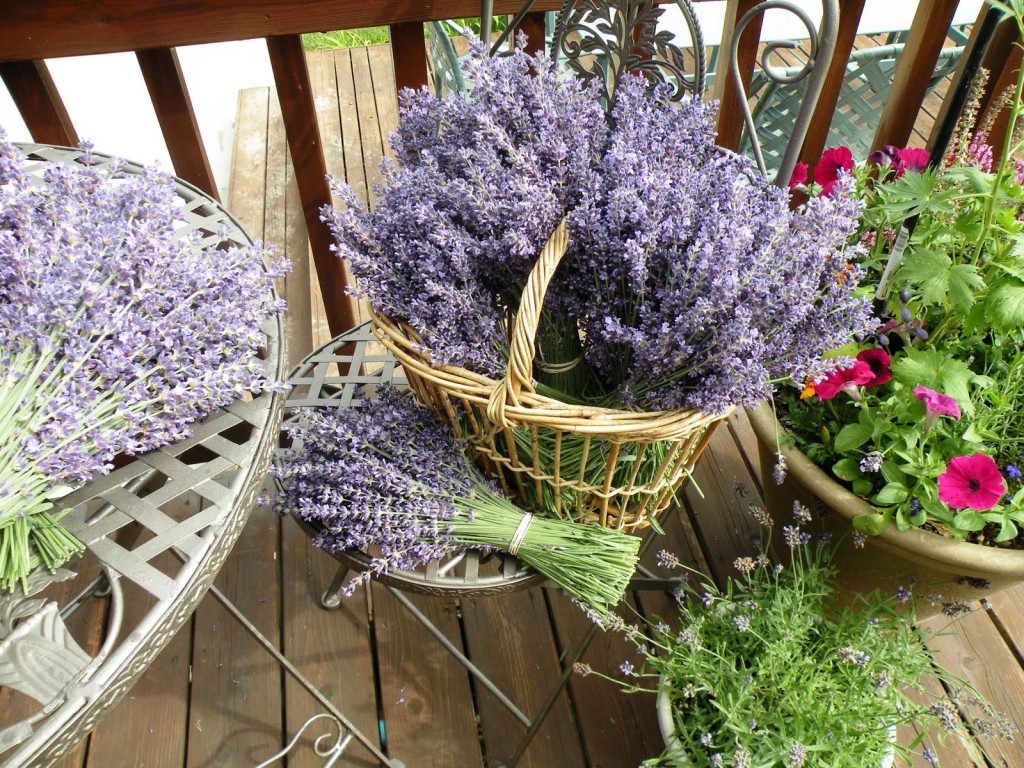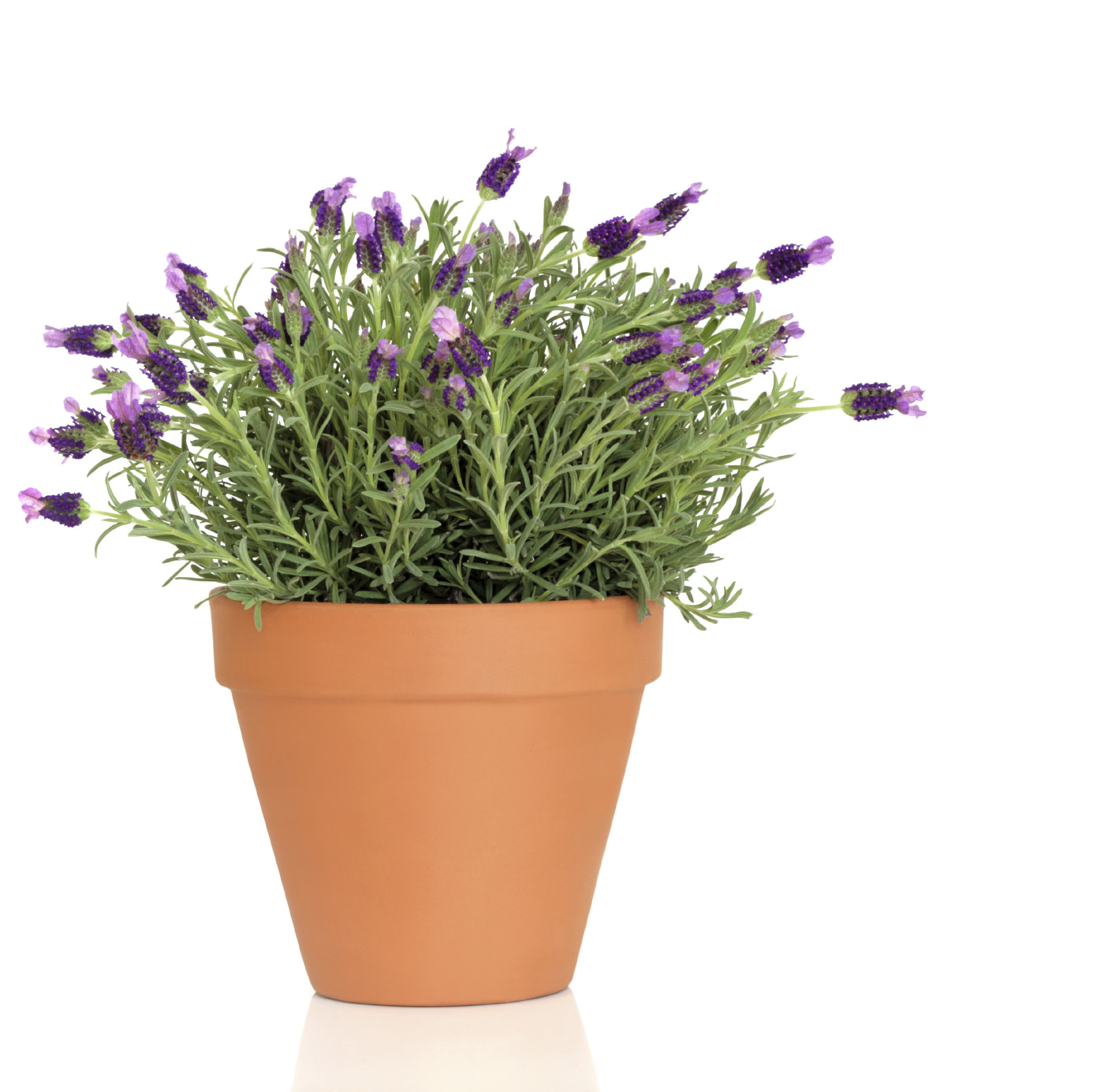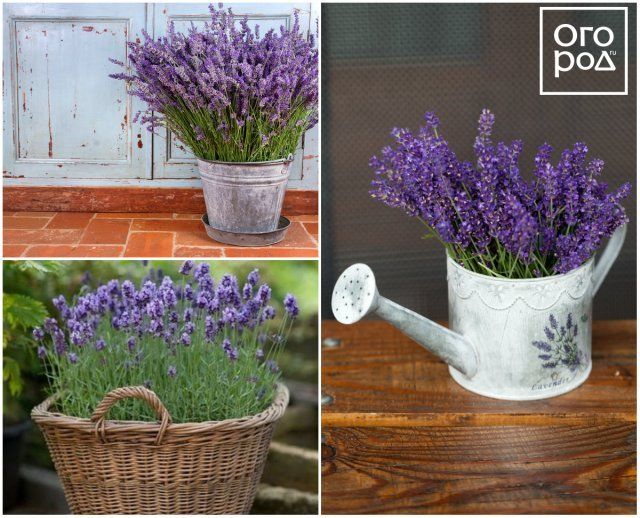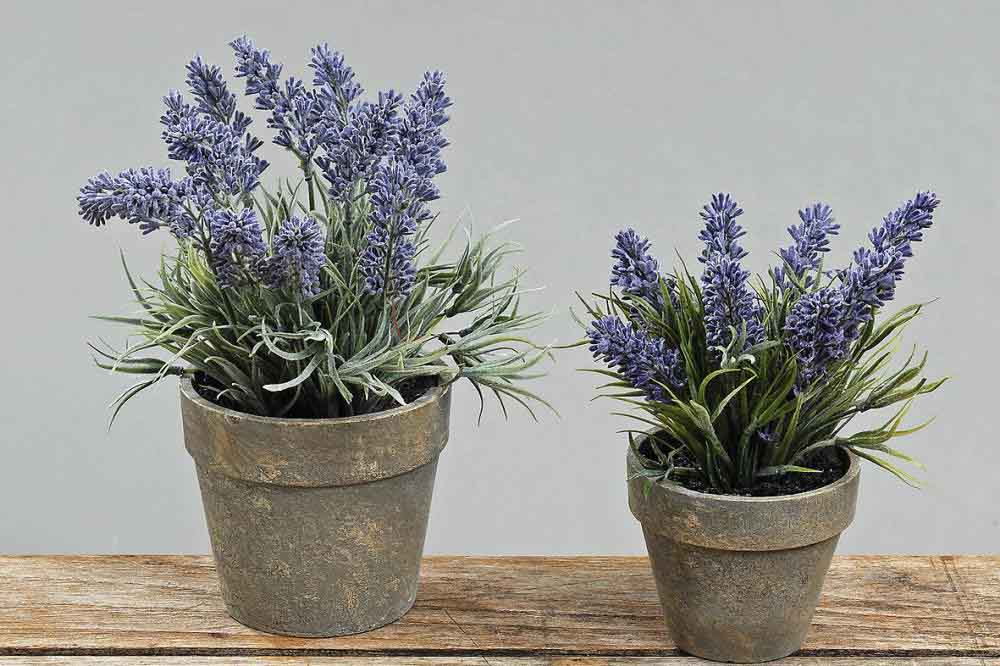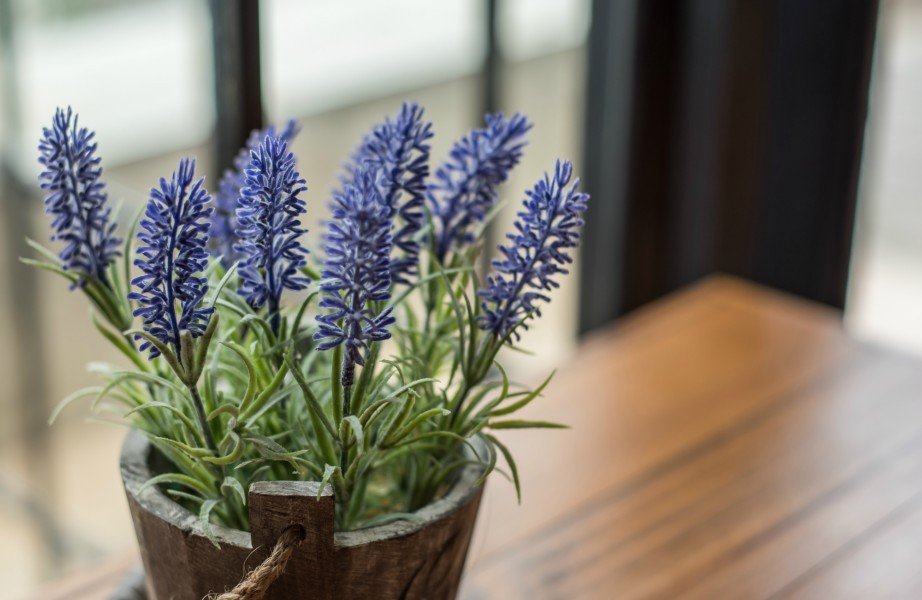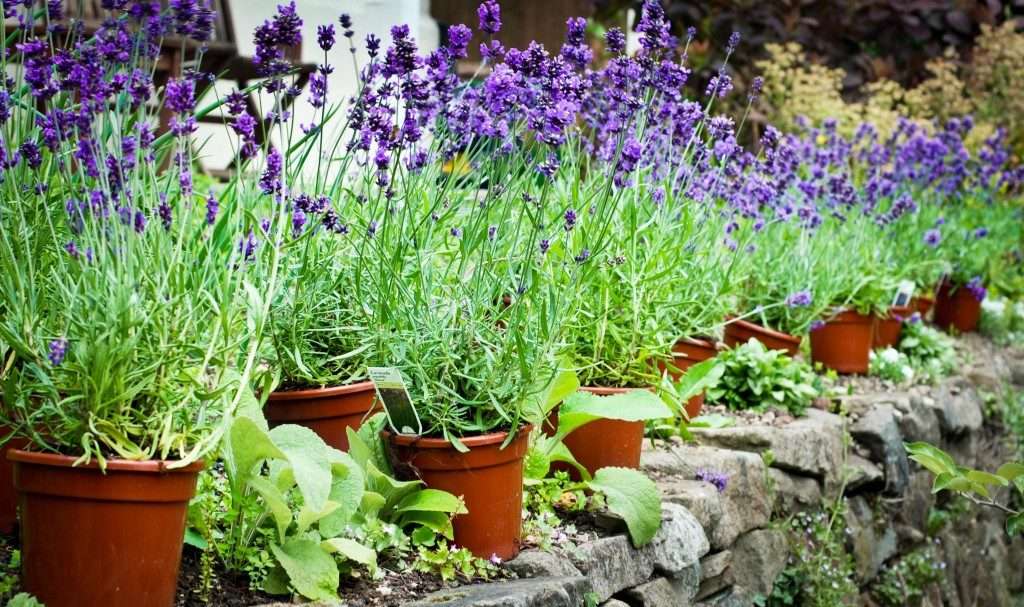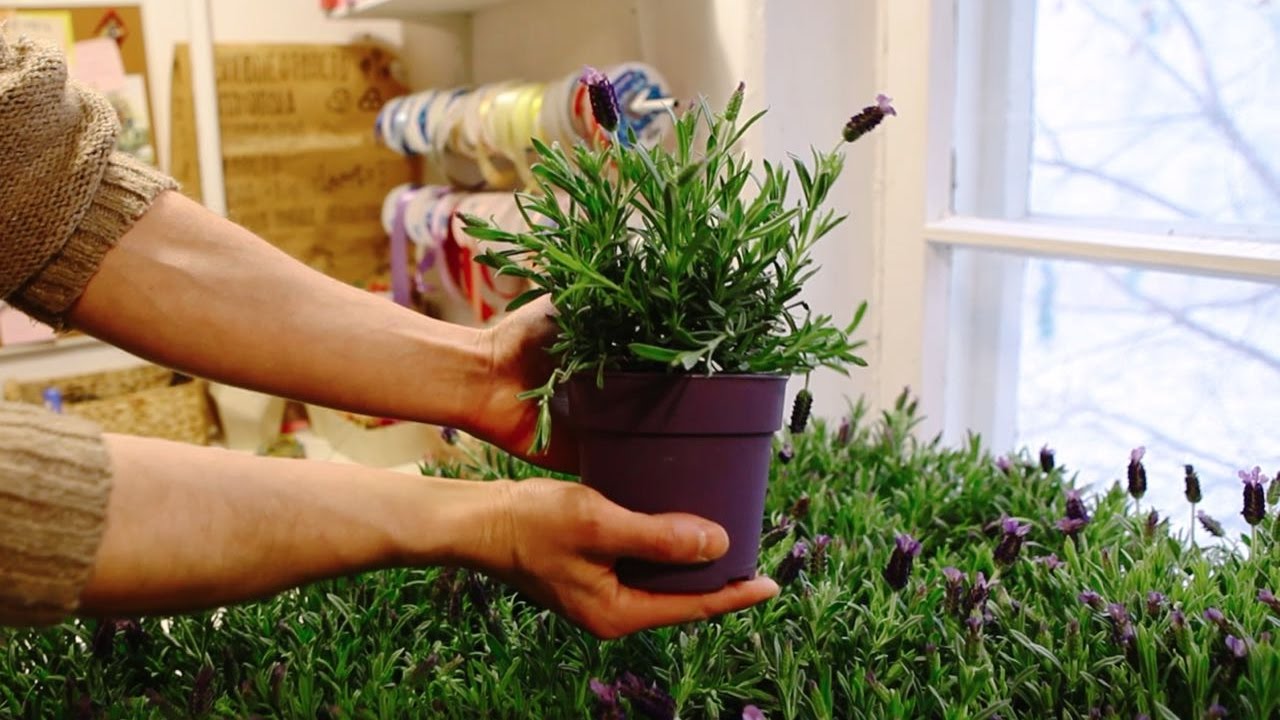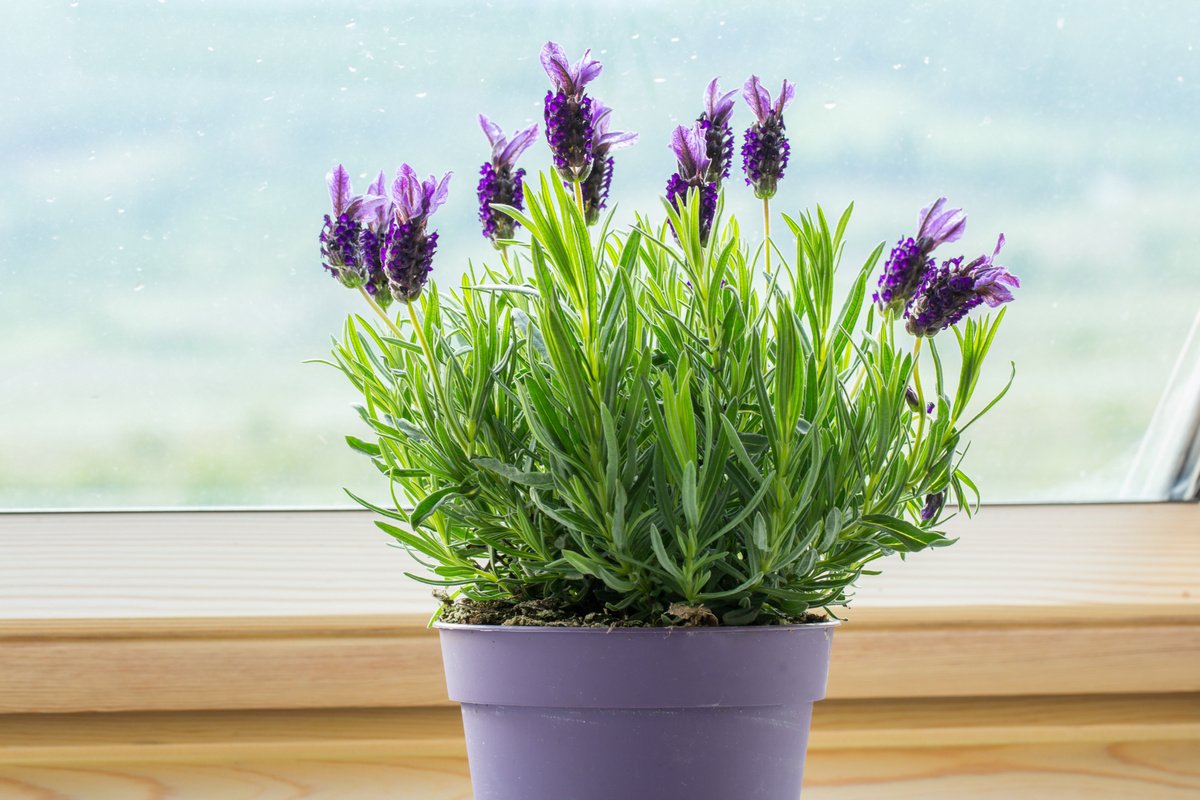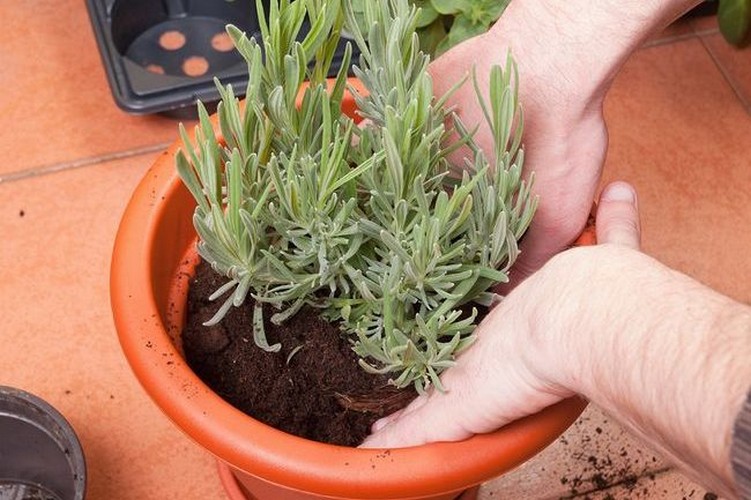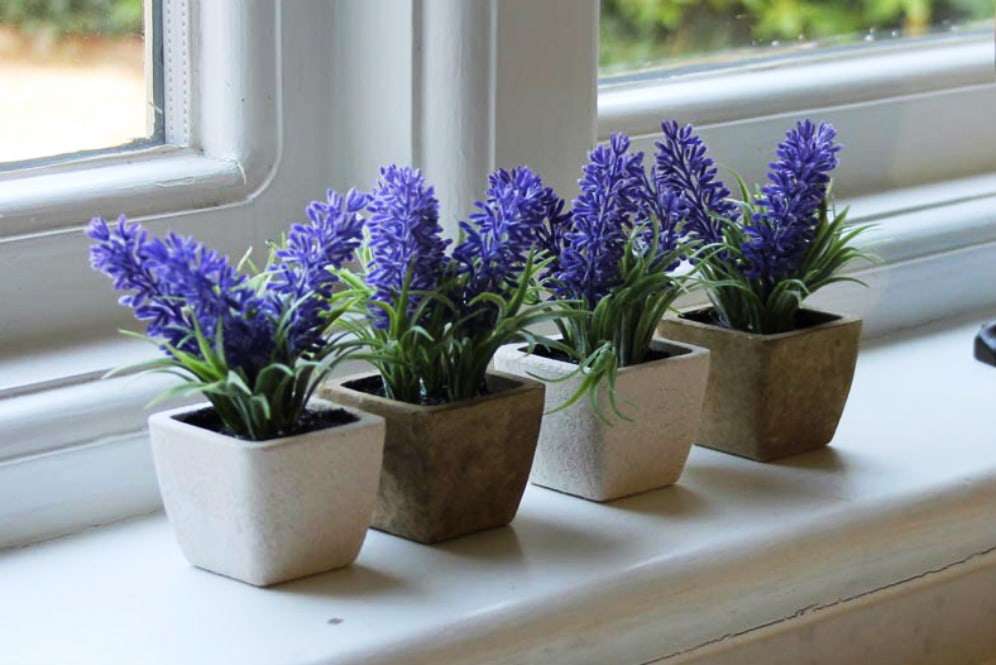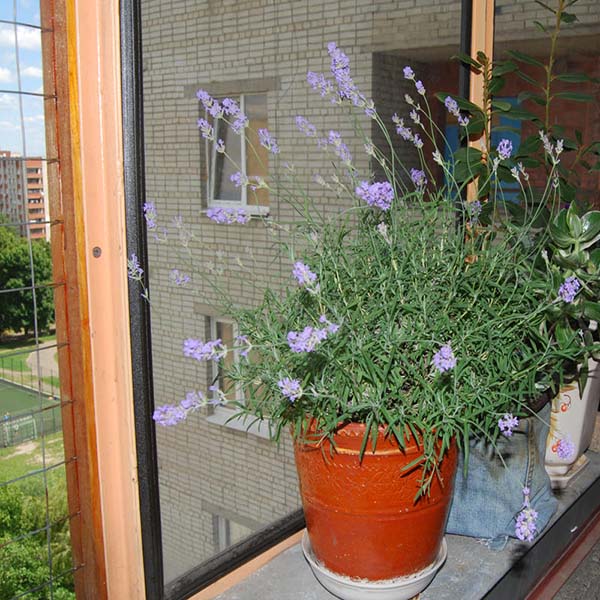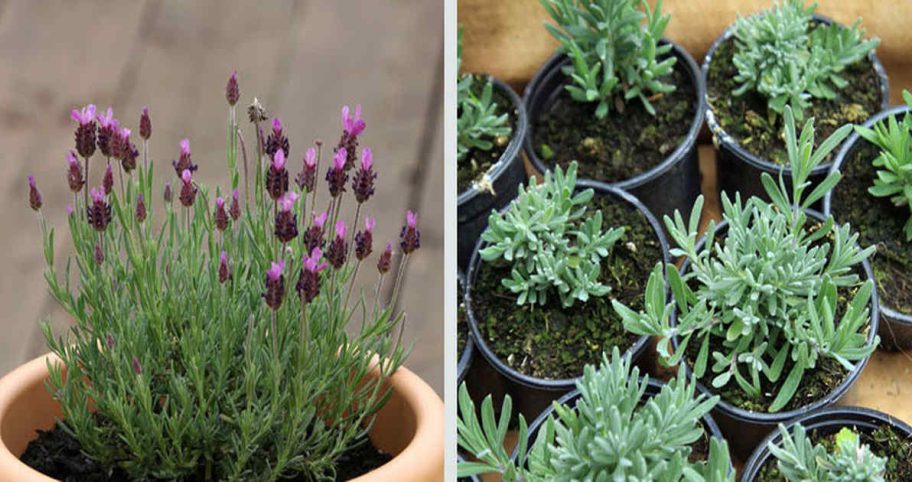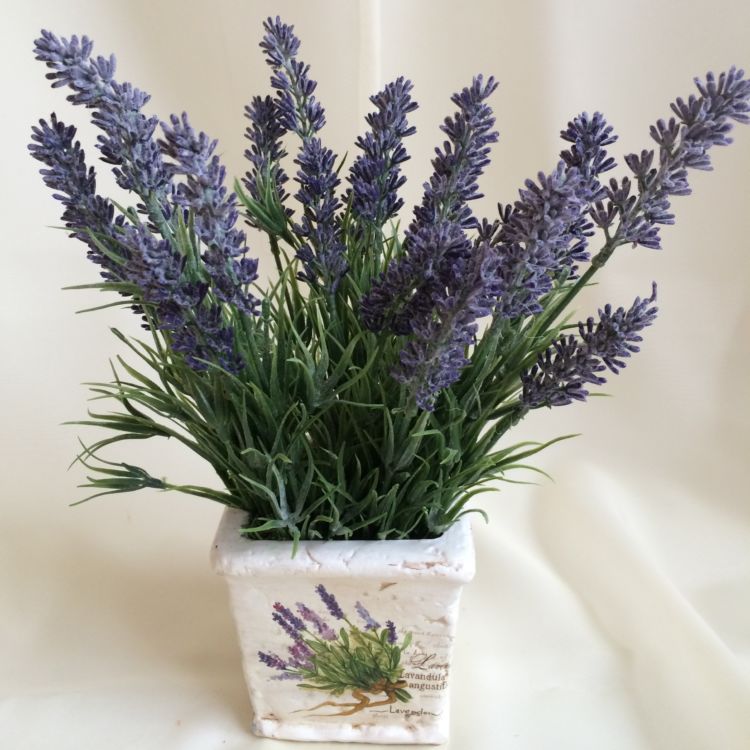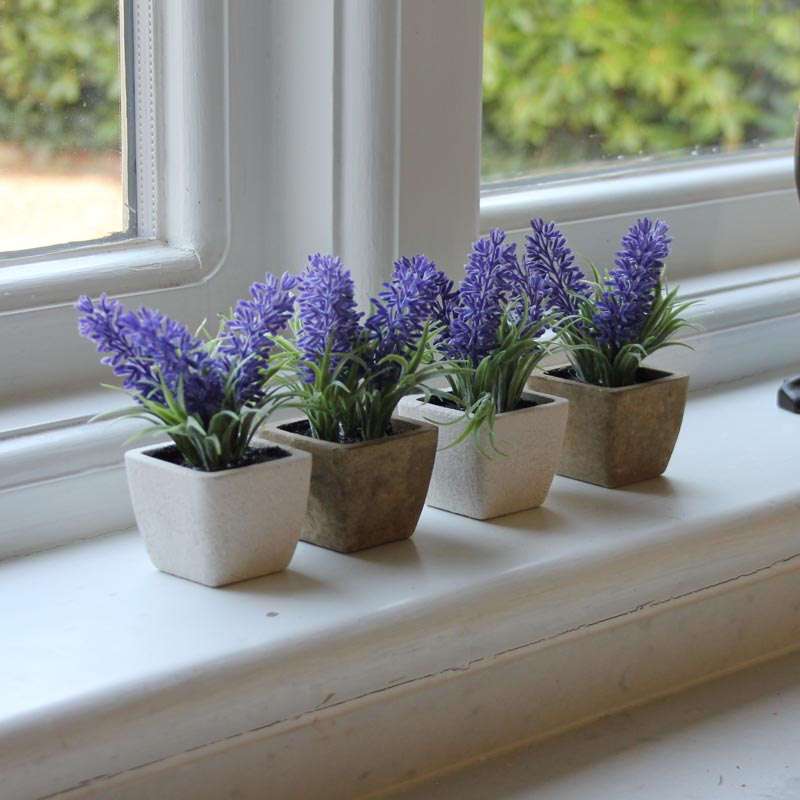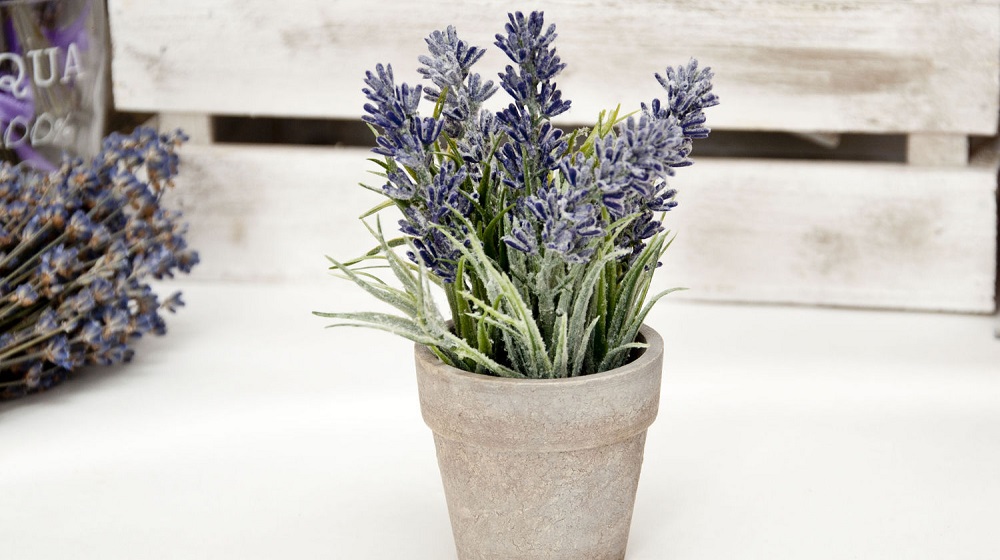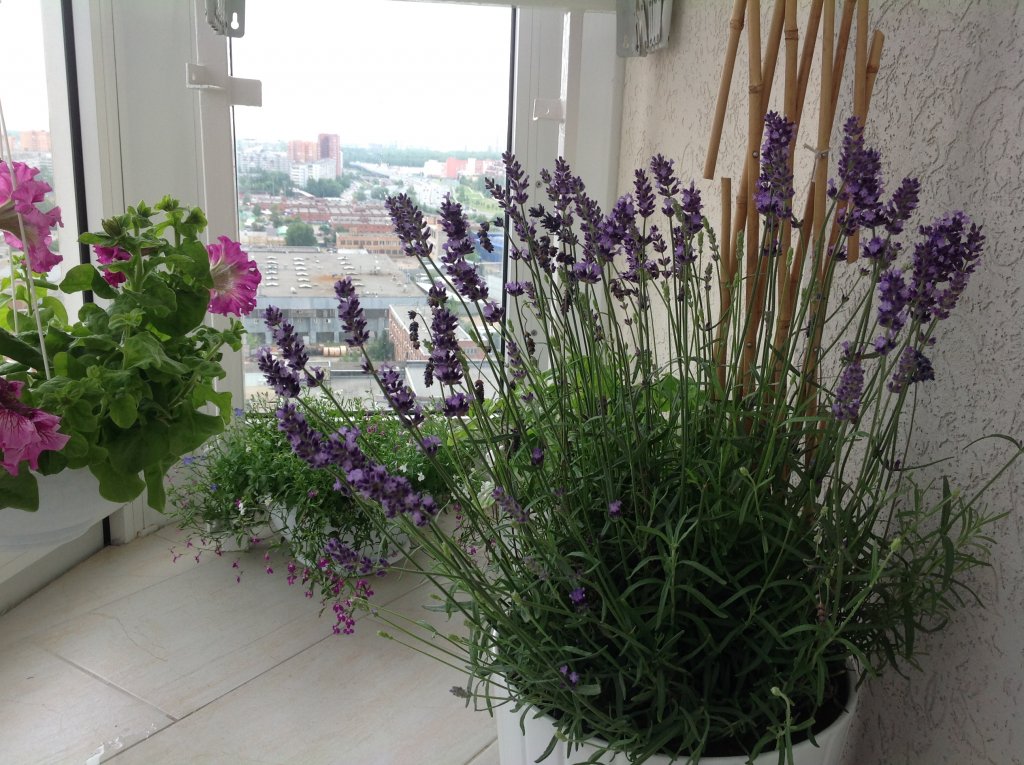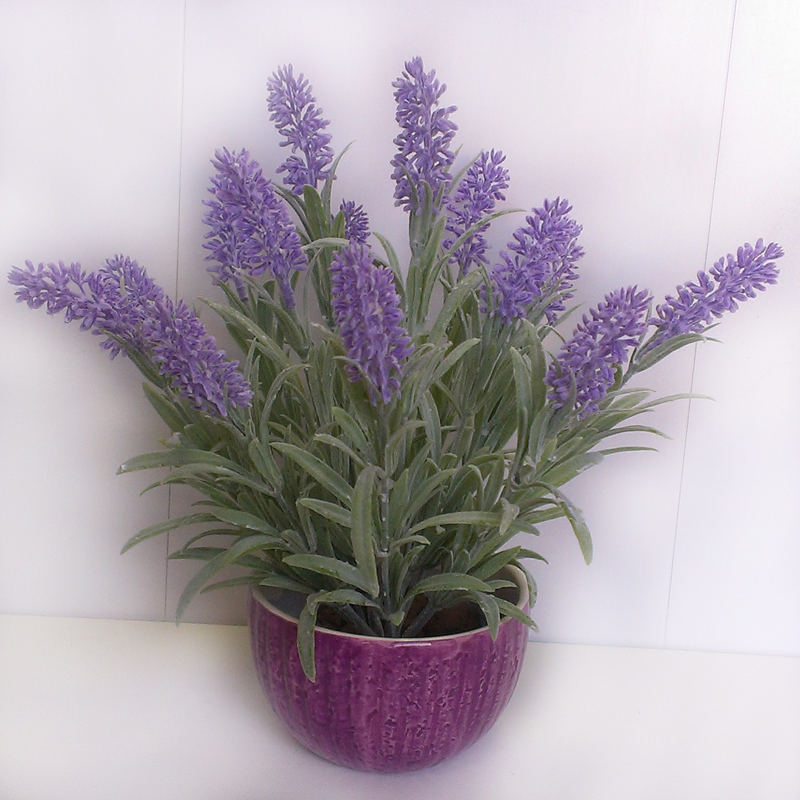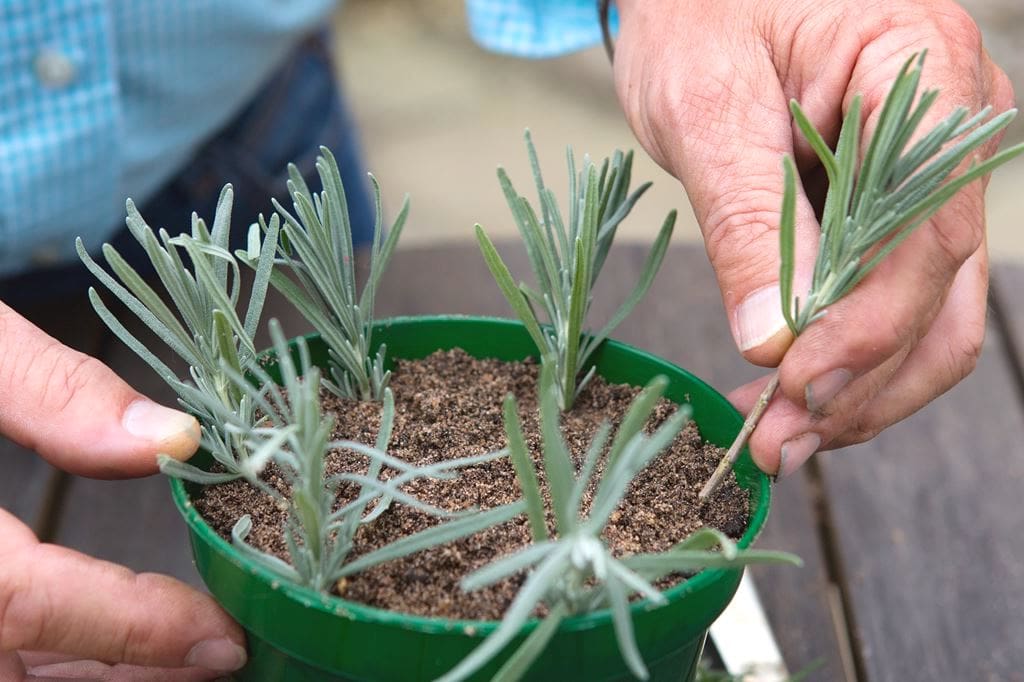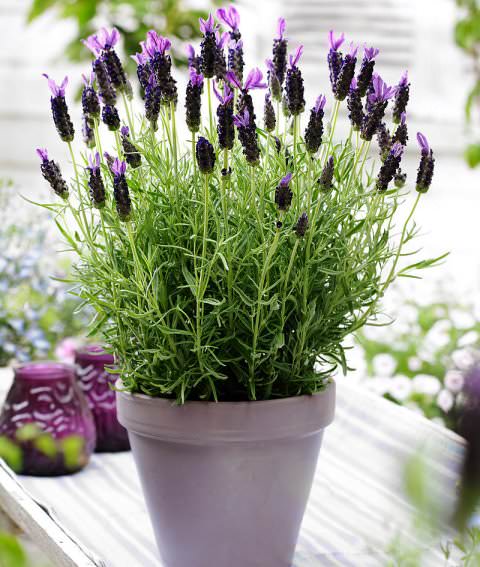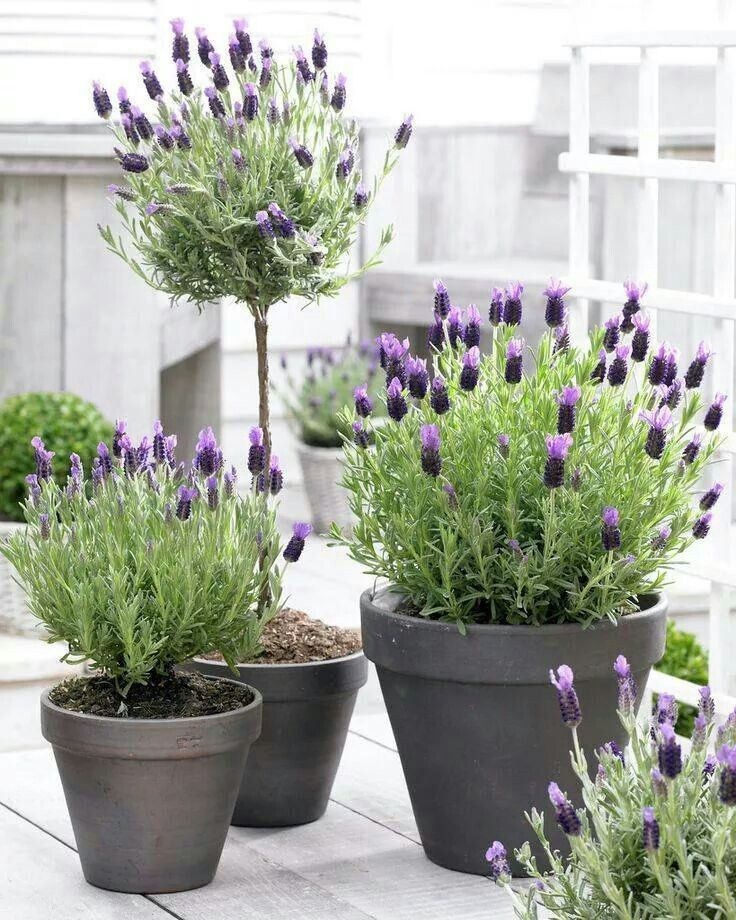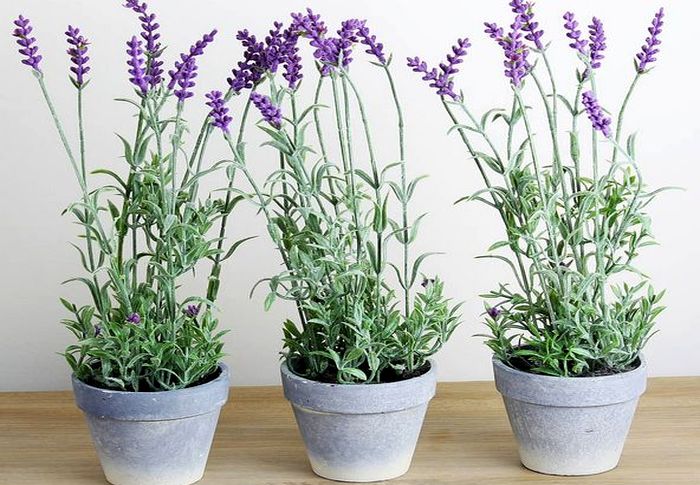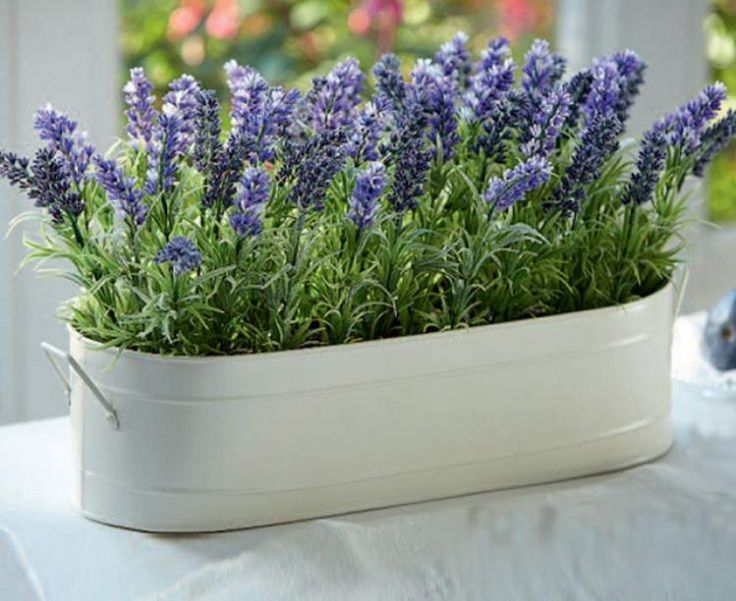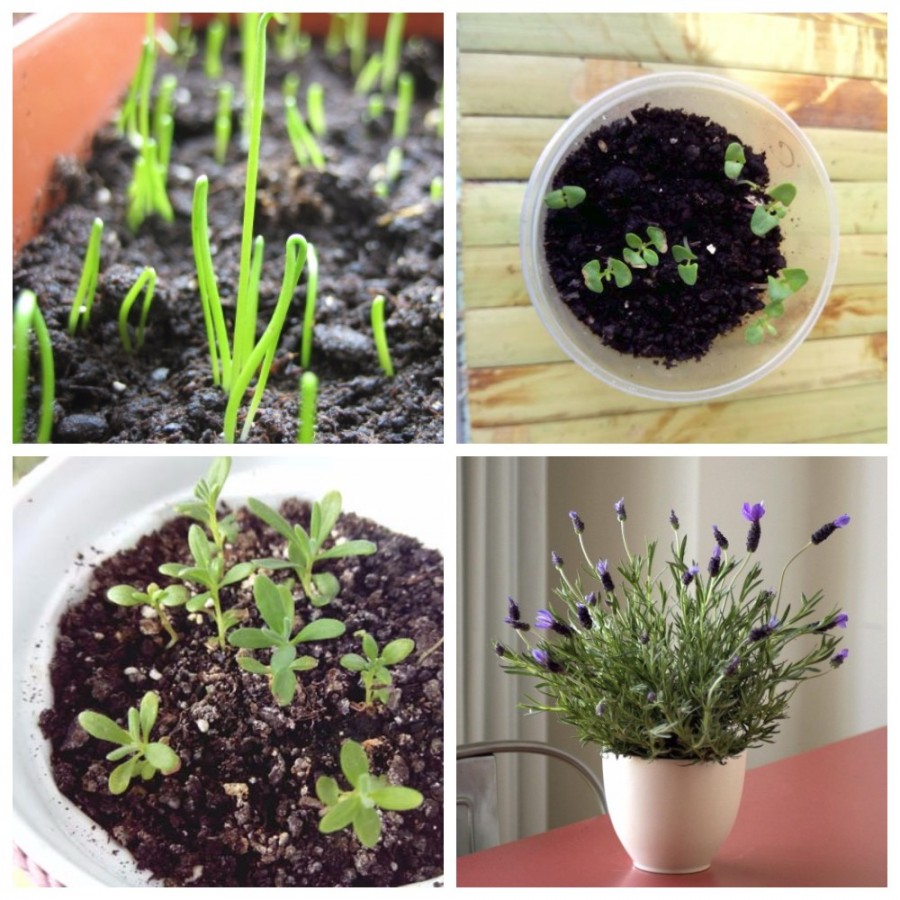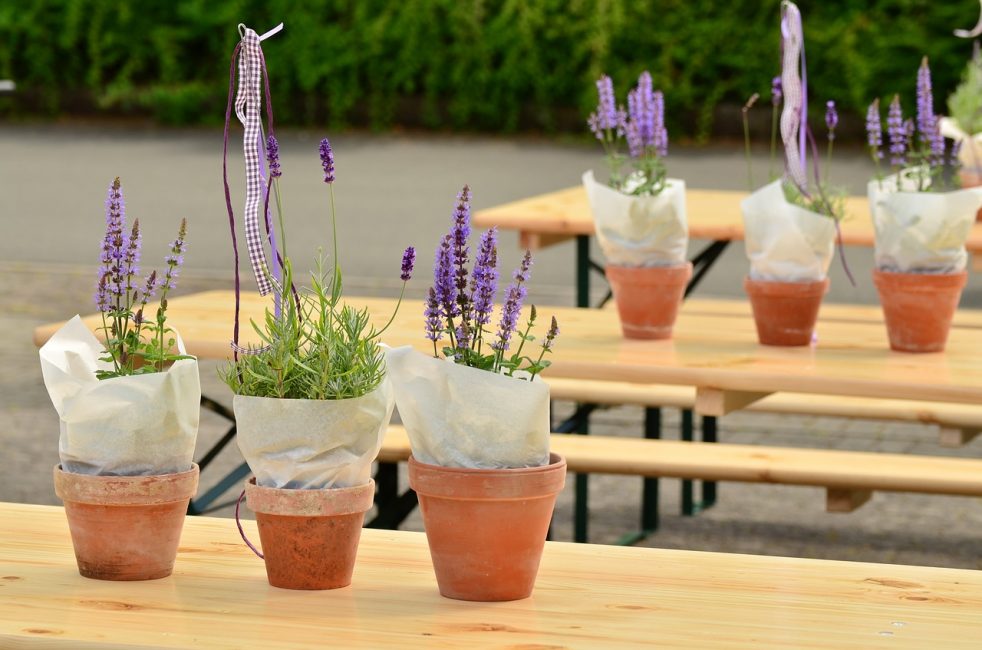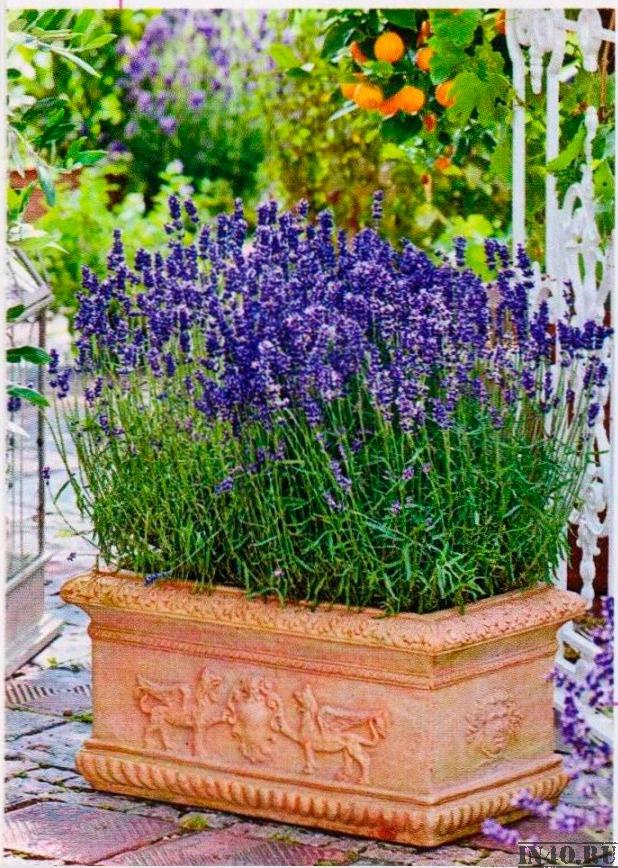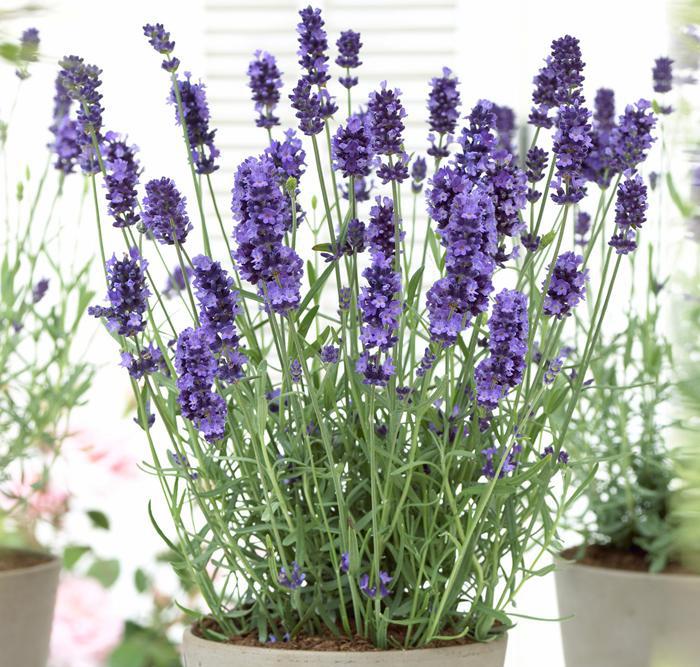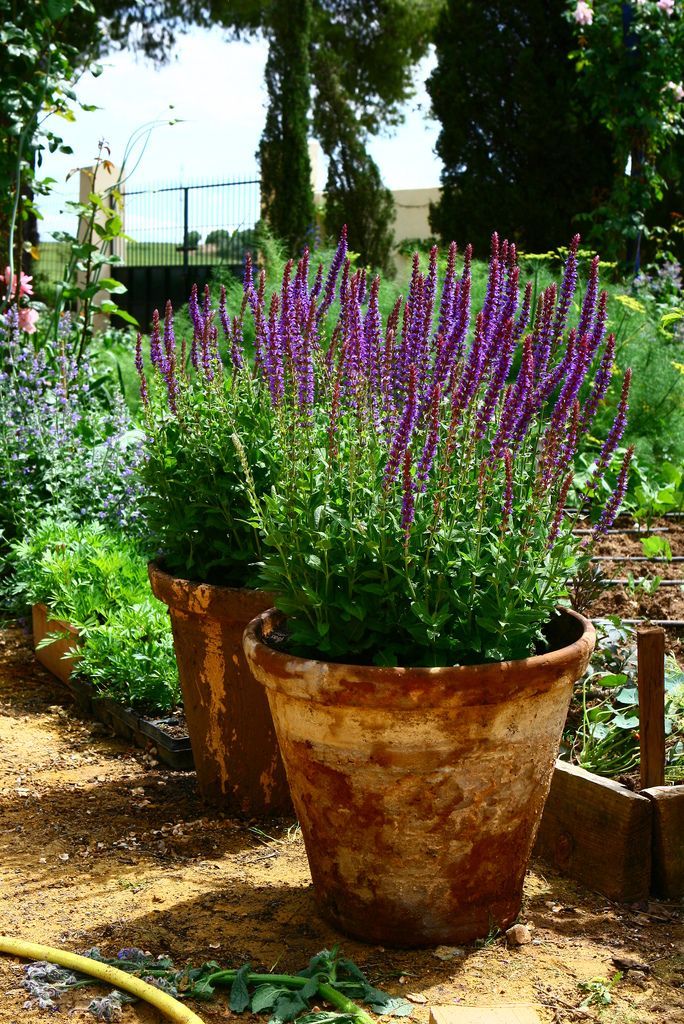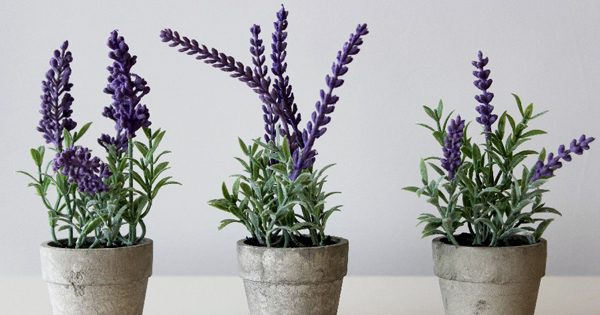Features of lavender care
Lavender at home takes time and some patience. The plant prefers sandy soil, direct sunlight, does not need frequent watering. In the shade, the plant will take root, but it will not please with abundant flowering. Planting lavender near bodies of water is not recommended. Being a long-term plant, lavender needs pruning, the purpose of which is to form a beautiful lush crown of the plant. It is required to produce it in the fall (after wilting of the spikelets-inflorescences), shortening the bush to a height of 3-5 cm above the soil surface. Pruning should be done carefully, until woody shoots.
Lavender, which is not difficult to care for, needs constant loosening. This will provide good air circulation and get rid of nearby weeds. Also, the ground can be mulched, rotted foliage, needles or wood chips can be used as mulch. The soil should remain open near the base of the trunk, which will protect it from rotting.
The plant is transplanted in spring or autumn, during the dormant period, before the onset of cold weather. For the winter, it is recommended to cover lavender with spruce branches or needles. If the plant is still frozen, the dead parts should be cut off. The bush will recover quickly enough.
Possible diseases
Lavender health problems are rare, but some difficulties can arise from improper care. Consider the most common lavender diseases:
- Abundant watering leads to yellowing of the shoots and rotting of the root system. In this situation, the amount of water must be reduced.
- The shrub is attacked by leafhoppers. It is a pest that feeds on plant leaves. The bush should be sprayed twice with a phosphamide emulsion of 40% concentration.
- Lavender can be threatened with septoria. A suspension of copper oxychloride helps to get rid of this disease: 3-4 grams of powder are diluted in a liter of water, this composition is sprayed on the flower 2 times with an interval of 15 days.
Variety of room lavender
Thanks to the indoor format, it is not necessary to limit yourself only to the most popular garden plant and the most frost-resistant type of "English" lavender - narrow-leaved lavender (Lavandula angustifolia). Its large, up to 40 cm in height in pots, wide and dense bushes in indoor format are compact, and the classic apical spikelets of inflorescences are amazingly fragrant.
The choice of varieties with white, blue, pink and all shades of purple is very large (the color is usually reflected in the name of the variety - Alba, Hidcote Blue, Rosea, etc.). But other types of lavender can also be grown in the rooms.
Broad-leaved lavender (Lavandula latifolia), also known as French or butterfly lavender, is famous not so much for its brighter and larger leaves, but for the very beautiful shape of larger flowers with long bracts. The flowers bloom on high peduncles, as if they are hovering over the greenery. Although not as aromatic, this lavender looks more exotic and vibrant. Its varieties are predominantly pink-purple.
Most indoor lavenders are hybrid unnamed varieties that are chosen for the color of the inflorescences. Among them there are also varieties belonging to the so-called hybrid, transitional, or Dutch lavender (Lavandula x intermedia), famous for its spectacular flowering.
They are easily recognizable by their larger and more spreading bushes. The leaves of almost all varieties are silvery, and the flowers are larger, in long, showy spikelets. In varieties, you can choose shades of blue, lilac and purple colors.
Plant care
In order for lavender to remain healthy and to delight with beautiful and fragrant flowers, it must be properly cared for.
Watering
In the first month of life, the plants are watered twice a day: in the morning and in the evening. The soil must be constantly moistened. From the second month, watering is reduced to once a day. Excessive moisture is detrimental to lavender. Only settled water at room temperature is used.
Fertilizer
For the first 10 weeks, lavender is fed every 2 weeks. Then the soil is fertilized only during flowering. To do this, you can use the Agricola-Fantasy solution, which is prepared in the proportion: 2 tablespoons of the substance per 10 liters of water. One lavender bush will need 1 liter of liquid. Alternatively, organic compounds such as Rossa Universal and Potassium Humate are suitable. The preparation of the nutrient mixture is carried out with precise account of the proportions: 2 tablespoons of Rossa and 1 tablespoon of Humate are dissolved in 10 liters of water.
At the beginning of the growing season, the plant is fed with nitrogen fertilizers, which ensure the growth of the green mass. These include ammonium nitrate, carbamide, ammonium sulfate. But from the second half of July, these funds are recommended to be excluded. Nitrogen lengthens the growing season, and if you continue to use it, the plant will not prepare for winter.
 Lavender doesn't like over-watering
Lavender doesn't like over-watering
Pruning
Pruning is carried out from the second year of the life of the culture and is carried out after the flowering stage to prepare the plant for wintering: dried lavender stems, as well as the upper part of the bush, are removed. The cut should be slightly above the starting level of leaf growth. This procedure allows you to give the shrub an aesthetic appearance.
With the onset of spring, lavender is pruned again. It is impossible to shorten it to a stiff stem - this will lead to the death of the plant. Be sure to leave 4-5 green shoots.
Transfer
The plant does not tolerate such a procedure very well, therefore, lavender is transplanted only with an earthen clod. The most suitable time for this is spring. The flower can be transplanted in the fall, if you have time before the onset of the dormant period. The process itself has the following features:
- A pot with a diameter of 15-30 centimeters is chosen, depending on the size of the bush.
- At its bottom, drainage from expanded clay or small stones is poured.
- Then the container is filled with potting soil. Moreover, its level should not reach the edge of the pot 1-1.5 centimeters.
- The flower is placed in the ground 2 centimeters, after which it is regularly watered
Preparing for winter
This period is a time of rest for lavender. In addition to pruning, the following activities are carried out to prepare the plant for wintering:
- Watering frequency is reduced to 1 time per week.
- The container with a flower is moved to a cool room. Sometimes lavender blooms in winter, but this negatively affects its health.
- The growths are removed.
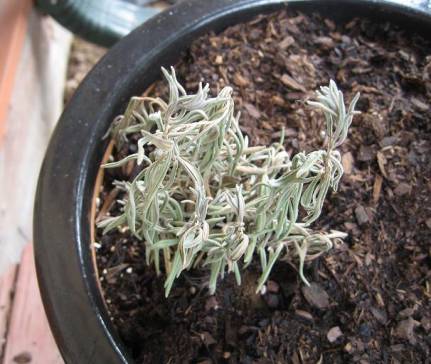 Keeping your culture healthy can help you care for it
Keeping your culture healthy can help you care for it
Pruning lavender
Pruning is considered one of the most important components of care, and not only decorativeness, but also the existence of a plant depends on the correctness of its behavior.
Pruning methods
The plant needs constant pruning. This helps to maintain decorativeness for many years and keep the compact shape of the bush.
Cropping to shape
This type of pruning can be called radical because the shoots can be shortened by 1/3 or even 1/2. Most often, such pruning is resorted to after minutes of frost, or immediately after the spring planting of young plants. The shrub is trimmed to woody twigs to give it a defined shape.
Attention! With radical pruning, the shoots are cut to the level of lignified wood, leaving a small non-lignified growth of the current year. If too pruned, the bush may not grow back.
Pruning to stimulate flowering
It is recommended to carry out this type of pruning immediately after flowering, without waiting for complete flowering. It is desirable that most of the flowers in the inflorescence have already faded, but blooming ones remain. The plant begins to grow new shoots, which bloom again.
Advice! In the northern regions, where the plant does not have time to bloom again, it is recommended to postpone pruning until spring, since young shoots may not have enough time to form, which will lead to freezing in winter.
Rejuvenation of bare bushes
Lavender cannot be stumped like many other shrubs. Such pruning will definitely lead to the death of the plant. Therefore, rejuvenation of bushes that have lost their appearance is carried out in several stages. In the first year, one half of the bush is cut radically, and the next year the second. This technique will allow you to preserve the plant and get rid of exposed branches.
Pruning for the winter
Autumn pruning is carried out in early autumn after the second flowering. Shoots are cut shortly, leaving 2-3 cm of young wood. In this state, the bush is easier to cover for the winter. It is also worth cutting off shoots that are too long, which can be damaged by wind or snow.
The subtleties of dressing and watering
Caring for lavender in the open field involves several activities that will have to be carried out in turn during the entire growing season. Plants need to be fed regularly. It is better to use fertilizers with a high potassium and low nitrogen content for this. It is not worth using manure to enrich the soil: an excess of nitrogen in the soil is fraught with the fact that lavender bushes will actively branch, delighting with dense juicy greens, but they form few buds.
Watering should be done in moderation. The plant does not like excess moisture, but it also does not tolerate its lack of moisture, responding to it with meager flowering. It is worth starting watering lavender in the garden only when the topsoil in the garden dries well.
High hilling and mulching of the beds will help to keep the moisture necessary for plants in the soil, as well as to increase its porosity. Both procedures are carried out regularly - in the spring and autumn. They also increase the decorative effect of lavender bushes, influencing the formation of young shoots on their trunks. Decayed foliage works well for mulching. You can also purchase special multi-colored substrates in the store, which will make the beds even more attractive. The procedure will require attention. To prevent rotting of the flower, the soil at the base of its trunk is left uncovered.
Caring for a plant in the open field involves its systematic pruning. It increases the lifespan of lavender bushes. It is carried out twice: after the end of flowering and towards the end of the growing season. When the buds of the plant wither, it is enough to shorten the stems on which they were located by 1-2 cm. Autumn care is more intense, it involves the removal of most of the old shoots from the bush. No more than 4-5 young stems are left on it.
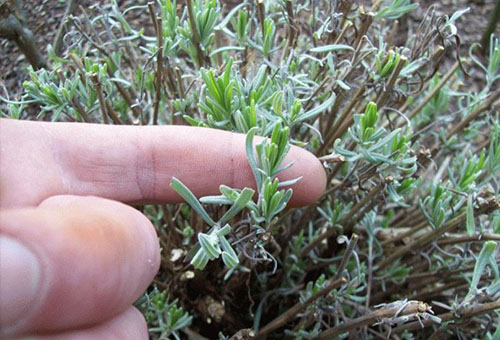
Important conditions for landing
So what should you prepare for lavender before planting? The plant needs special conditions, then it will be able to delight you with large inflorescences.
Pot
As mentioned, the lavender pot should be deep so that the central root has room for growth, and voluminous so that the entire root system has enough room to receive nourishment. For single plants, cylindrical containers with a diameter of at least 30 cm are selected, for a spectacular group planting - oblong containers with the calculation of 2 liters per flower.
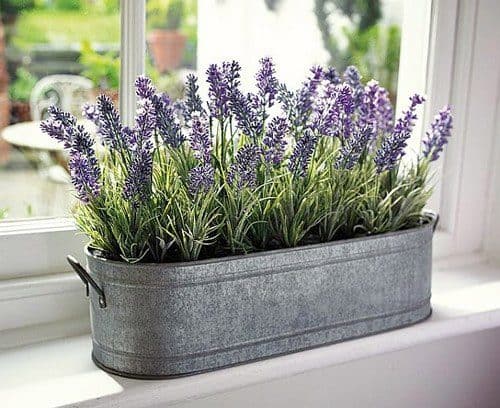
There are no special requirements for the material of the pot, although experienced flower growers recommend using unglazed ceramic ones - their porous structure will not allow the roots to suffer from waterlogging. In any case, the container must have drainage holes.
Lavender has a rather negative attitude towards overheating, therefore, it is recommended to choose light-colored pots for bushes growing on a windowsill or balcony. Dark containers will attract a lot of solar heat, the earth and roots will overheat, which can cause the plant to die.
A place
Domesticated lavender really needs good lighting and will neither bloom nor grow without it. It is better to keep it in the apartment on the southern windowsill, lighting it up with fluorescent or special phytolamps for at least 10 hours a day in the cold season. In summer, it is better to take pots with bushes to a ventilated balcony.

Priming
For planting lavender at home, you can use your regular home flower primer. If you want to "please" the bushes, prepare a special soil mixture for them by mixing the following components in the same ratio:
- sand (fine gravel);
- humus;
- sod land;
- leafy ground.
Landing options
How to grow lavender at home? You can use any method that seems convenient to you: plant seeds, root cuttings, propagate an adult plant by layering or dividing. The first method is the most accessible, for the rest you will need to find bushes from friends.
Planting lavender seeds
The seed will not grow without stratification - a special manipulation that repeats natural processes that awaken the seeds:
- Shift the seeds with sphagnum or peat.
- Place the mixture in a container with a lid.
- Moisten the mass with a spray bottle.
- Put the container in a refrigerator or cellar and keep it at a temperature of 5-6 C for 30-40 days.
At the end of the stratification, prepare the soil mixture: mix peat and sand (1: 1) and add a little crushed shell to them. The soil must be thoroughly kneaded with your hands, and then sieved through a coarse mesh sieve. The soil in which the seeds will germinate should be lush, not prone to caking and compaction, and also not have lumps that can crush and destroy the germinating seed.
Fill seedling containers with soil mixture, place the seeds and sprinkle them with a small (2-3 cm) layer of prepared soil. During germination, you will need to "play with mother nature" again, copying natural conditions:
- cover the containers with plastic wrap and place them on the lower shelf of the refrigerator for 2 weeks;
- move the containers to a bright and warm (15-18) place until shoots emerge.
Lavender shoots will appear 30-40 days after planting. After 2-3 weeks, they can be dived into a spacious container, and after they have grown and matured enough, they can be transplanted into individual pots. You will learn more about the process of growing lavender from seeds in the video:
Rooting cuttings
The seed method requires a lot of time for germination and effort to comply with agrotechnical conditions; after the successful emergence of sprouts, you will have to wait 2 years for the bushes to bloom. If you use the technique of cuttings, the plants will delight you with beautiful inflorescences and aroma already next year.
Cut annual shoots from an adult plant, divide them into small (10 cm) segments, make the lower part, which will root, at an angle of 45 and treat with a rooting stimulator. Cuttings are placed in a mixture of sand and peat (1: 1), covered with foil or individual caps, and after rooting, planted in pots.
Propagation of lavender by layering
Rooting cuttings is one of the simple, cost-effective and reliable ways to get a new lavender bush. For this, the lateral shoots of an adult plant are bent to the ground, fixed and covered with soil. Roots will gradually begin to form on the layer, and after 2 months it will be possible to separate the finished bush from the mother plant.
Dividing the bush
In late September and early October, the overgrown bush is divided directly in the pot: with a sharp long knife, carefully cut off small parts of the plant along the edges along with the roots.Mark the pieces to be separated by loosely tying tape or thick thread. From autumn to spring, continue to care for your home lavender "as usual": water, spray, light up and protect from overheating
In the spring, the marked parts of the bush are carefully dug up and transplanted into individual pots.
Growing indoor lavender is not such a hassle. It is quite simple to create comfortable conditions for the bushes, so do not deny yourself the pleasure of having a special flower with a pleasant aroma at home. It will be a wonderful decoration for your interior and will fill your home with an atmosphere of comfort and warmth.
Caring for lavender in the garden

After the first inflorescences are formed on the lavender seedlings, it is recommended to cut them off. Thus, young bushes will not waste their energy on the formation of flowers, but will be able to get stronger and form a powerful root system.
After planting lavender in the garden, during the first season, it is characterized by extremely slow growth, in this regard, you need to regularly pull out weeds, as they can drown out young shrubs.
In addition, the bushes will need to be systematically cut and fed. At the same time, it is recommended to use potash fertilizers for feeding. The fact is that nitrogen fertilizers and manure contribute to the active growth of green mass, and this negatively affects flowering.
Watering and hilling
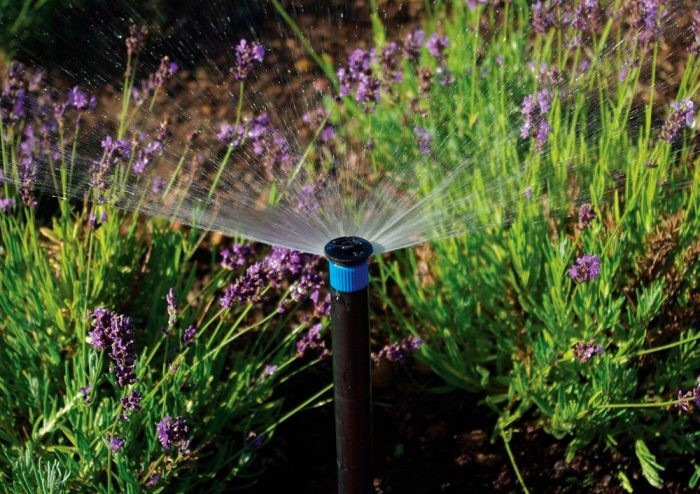
In order for lavender to grow and develop well, it needs abundant systematic watering. On hot days, the frequency of watering is significantly increased. Every time after rain or watering, loosen the surface of the soil between the plants and remove all weeds.
In order to significantly reduce the number of weeding, loosening and watering immediately after the seedlings are planted in open soil, the surface of the earth between them is covered with a layer of mulch (peat).
Old shrubs in spring and autumn are sure to huddle high. Thanks to this, new shoots can form on the old branches.
Pruning

Such shrubs need systematic pruning, which is carried out every year. Immediately after the bush fades, the inflorescences that have begun to fade are cut off, and in the autumn, the branches are shortened to give the lavender a neat shape. Make sure that it does not stretch strongly upward, as due to powerful gusts of wind, the bush can lie down, as a result of which it will lose its decorative effect.
After the age of the plant is 10 years or more, if necessary, you can carry out anti-aging pruning, for this, all branches are cut off, while leaving only segments about 50 mm long. Such pruning can be arranged for a younger shrub, if it blooms very poorly.
What should be the proper care
Unsuitable fertilizers should not be used in the cultivation of blue splendor. Lavender cannot stand them. It is recommended to use drops containing potassium for the development and good growth of the plant.
Heat-loving inflorescences do not tolerate dryness. It is best to put a flower pot in a room with an air temperature of about 15 degrees. Flowers need regular feeding for active growth. Would need:
- fertilize;
- cut off the cuttings;
- spray with water.
If there is a lack of sunlight in the room, you can use an artificial one - turn on a fluorescent lamp near the flower, providing additional lighting. In winter, indoor lavender should be located on the south side of the room, and in summer, the flower must be taken out to the loggia. Initially, the plant is "walked" in the fresh air for a short time - about an hour, accustoming it to a different temperature and wind. If this is not done, then the flower will die from a large number of oxygen molecules. Over time, the time of "walks" plants gradually increase.
It is periodically recommended to loosen and dig up the soil. The air needs to be humidified regularly using a spray bottle.
If lavender is grown from seed, after planting, the soil is fertilized with crushed eggshells. This measure determines the alkaline composition of the soil. Lavender grows quickly, once a week the soil is fertilized with a special liquid composition "Agricola" or other fertilizer. Be sure to fertilize the soil before and after the flowering of the plant.
The many-sided beauty of lavender at your service
Today there are over 30 varieties of lavender. In gardening, only a few names are used. Let's get acquainted with the most popular varieties.
Narrow-leaved (English)
The plant is an erect, branched bush with an extensive root system. Its height reaches up to 1 m. With active development, it forms a lush crown of many shoots.
Popular subspecies:
- Alba;
- Sentiva Blue;
- Munstead.
Its leaf plates are oblong and colored dark green. The edges are smooth. The maximum length of the buds is about 1 cm. The racemose inflorescences have a rich purple hue. English lavender can withstand temperatures up to 20 ° C. Lives on one site for up to 20 years.
Broadleaf (French) lavender
The flower grows up to 1.5 m in height. Deep green leaf plates are located along the erect stem. Light purple buds are crowned with stable flower stalks. Delivers a pleasant aroma. Blossom in mid-April and bloom until early summer. Under favorable conditions, flowering is repeated in September. French lavender easily tolerates drought and does not lose its attractiveness at temperatures of + 16 ° C.
Jagged lavender
The fragrant beauty of this species is distinguished by its high growth up to 150 cm. It got its name due to the jagged edges of the leaf plates. Known varieties:
- Royal Grown (purple);
- "Redundulata" (pale pink);
- Regal Splendour (purple).
Spike-shaped inflorescences contain up to 10-12 buds, which are painted in a bright purple color. The variety is considered to be thermophilic. The first signs of the disease appear already at a temperature of + 15 ° C.
Hybrid (Dutch) lavender
The variety is bred from narrow-leaved and broad-leaved species. Under favorable conditions, it grows up to 2 m in height. Inflorescences bloom in the first month of summer. It is used as an industrial raw material for the production of essential oils and medicinal herbs.
Views
Today, many varieties of lavender are known, each of which has certain characteristics.

English
This plant is native to the south of Europe. It is a perennial shrub characterized by small lilac blossoms and silvery foliage. The culture blooms in July-August. It is very resistant to frost. The most common type of such lavender is the dolphin plant. It does not exceed 30 centimeters in height and has attractive silvery foliage. The Headcoat variety is very popular. It is used to decorate small hedges.
Common varieties of English lavender include:
- Headcoat Giant - has a compact size and reaches 60 centimeters;
- Alba - the plant grows 50 centimeters and has white inflorescences;
- Manstad - the bush grows up to 40 centimeters and is distinguished by rich blue flowers;
- Rosea - the culture reaches 40 centimeters and has a purple hue;
- Headcoat Blue - grows up to 40 centimeters and has purple flowers.
French
This lavender is also called broadleaf. It has an intense aroma and attractive flowers. They are pink, white, lilac. There are purple and burgundy tones. The culture begins flowering in April-May and ends in July. In August, the plant can bloom again.
The French culture can hardly be called frost-resistant. Therefore, it is recommended to grow it in warm regions. The most popular plant species is Lavandula stoechas pedunculata. The culture is characterized by original inflorescences.
From this category, the following varieties are most popular:
- Rocky Road - is a new variety, which is characterized by purple inflorescences;
- Yellow Vale - it is characterized by rich purple inflorescences and yellowish foliage;
- Tiara - has large blue flowers and cream bracts;
- Regal Splendur - has deep purple flowers;
- Helmsdale - differs in lilac color with a burgundy tint.
Hybrid
This lavender is also called Dutch lavender. This category includes highly decorative hybrids. They are massive bushes. They are characterized by large flowers. The plant has narrow leaves. They have a beautiful silvery color. Lavender blooms in July.

Famous varieties in this category include the following:
- Arabian Knight - has bright purple flowers;
- Alba - has a white color;
- Richard Gray is a small bush with purple flowers;
- Grosso - purple flowers are characteristic of lavender;
- Sawyers - has a pale lilac color.
Toothed
It is a special type of plant that has silvery foliage. It is characterized by large flowers of various shades of purple. This culture is more suitable for indoor cultivation. It is not recommended to plant it in open soil.
Narrow-leaved
This is an unpretentious plant that tolerates low temperatures well. The shrub begins to bloom in the middle of summer. Narrow leaves are considered a characteristic feature of the culture. They are grayish in color. The bush is compact.
Lavender care
Lavender requires proper care and planting, which is carried out in a comprehensive manner throughout the entire growth and development of the plant. We have already mentioned the need for constant access to the sun's rays to the leaves and flowers of the plant, so it is best to place the pot of lavender on the south side. In the summertime, lavender is taken out for a walk on the balcony. But you should start walking for an hour, because if you leave the plant outdoors for a long time, it can fade from an excess of oxygen.
Lavender is very thermophilic, but does not like dryness. For the winter, it is better to put lavender on the windowsill on the south side (if possible), but a temperature of 10-15 degrees will be optimal. But temperature, lighting and the place of growth are not everything. In order for the lavender to receive proper care and planting, it is also necessary to regularly feed the plant, cut the cuttings, transplant the flower from time to time and loosen the ground.
It is also important to remember about humidifying the air, if you do not have a humidifier, you can use a regular spray bottle and spray the plant with clean water.
Important! If your flower does not have enough light, then for the winter period you can provide it with additional lighting, including a fluorescent lamp next to it.
Top dressing
The main thing to remember about lavender is that the plant does not tolerate organic and nitrogen fertilizers. The necessary preparations for the growth and development of a plant are those that contain potassium as the main component. The first time (8-10 weeks) after sowing seeds / planting a seedling, you need to fertilize the plant once a week with liquid fertilizers, based on the calculation of 2 g (1 plug) of fertilizer per liter of water. An effective fertilizer will be crushed eggshells, which will maintain the alkali balance in the soil. If your lavender grows in open ground, then it should be fertilized at the beginning of flowering with the same fertilizers (for example, Agricola) and after flowering (any mineral fertilizer) with the calculation of 3 liters per 1 bush.
Features of watering in winter and summer
Lavender only needs watering during dry periods, but don't think about watering lavender once a week. Of course, the flower will rot from too much watering, but the soil for room lavender should always be moist. Water for irrigation must be filtered or settled. If your plant is still young, then you need to water it twice a day: in the morning and in the evening.
Important! It is necessary to water not only the roots, but also the upper part of the plant, so many growers recommend arranging a "rain" for the flower: once a week, take the plant outside (put the pots in the bath) and water the whole plant with a watering can, with a thin stream of water. But in this case, you need to be extremely careful not to damage the leaves or color.
Plant pruning
In summer cottages, lavender care also depends on the correct pruning of the plant, because if you cut the plant incorrectly, then there will be nothing to care for. The lavender pruning procedure is best done in 3 stages: summer (most important), fall and spring pruning.
Let's start with summer pruning. In order to prune lavender, we need gloves and regular garden shears. First of all, we cut off those branches that have small sprouts on the sides. We cut to these sprouts, then they will grow into a flower. If the branches of your plant have a tendency to bend, then you need to cut such a branch to the very bottom shoot. We also carefully check the plant for the presence of completely dry branches, which also need to be cut, usually such branches appear due to weather conditions or the age of the plant.
Did you know?Summer pruning allows you to collect the product, namely flowers and leaves, which are most useful during this period.
During the autumn pruning of lavender, the main task is to cut off all flowers from the "falling" branches - cut to the point of bending. You can cut the lavender very shortly, you can not really, the time of "rise" of the buds in the spring depends on it.
Spring pruning of lavender is best done in late March (weather permitting). Spring pruning is more like cleaning, as it is aimed at removing dry branches, broken, rotten. Pruning in the spring is also done to "shape" the shape of the plant.

